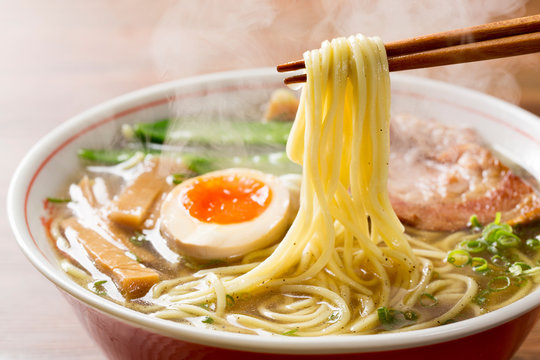- Home
- /
- Japan trip
- /
- How to Order Ramen in Japan: A Guide for First-Time Visitors
How to Order Ramen in Japan: A Guide for First-Time Visitors
- Category : Japan trip
- Tags: Japan trip tips, Ramen

Introduction
Ramen is one of Japan’s most beloved dishes, offering a delicious and satisfying experience for locals and visitors alike. Whether it’s your first time or you’re a seasoned ramen enthusiast, dining in a Japanese ramen shop can be a unique cultural experience. However, the process of ordering ramen in Japan might seem unfamiliar to tourists, with vending machines, customization options, and specific etiquette to follow.
This guide will walk you through everything you need to know about ordering ramen in Japan like a pro. From understanding the shop system to mastering the vending machine, you’ll gain the confidence to fully enjoy this iconic Japanese dish.
1. Understanding the Ramen Shop System
Before you order ramen, it’s helpful to understand how Japanese ramen shops operate. From the types of establishments to seating arrangements, knowing the basics will make your experience smoother.
1.1 Types of Ramen Shops
- Traditional Ramen Shops:
These are usually family-run establishments, offering a cozy and authentic experience. The focus is often on the food rather than decor, and menus may be handwritten or displayed on walls. - Chain Ramen Restaurants:
Popular chains like Ippudo and Ichiran are tourist-friendly and often provide English menus. These shops are known for their consistent quality and convenient locations. - Specialty Ramen Shops:
These establishments focus on unique ramen styles or premium ingredients. For example, some shops specialize in tsukemen (dipping ramen) or regional varieties like Hakata-style tonkotsu.
1.2 Layout and Seating
- Counter Seating:
Most ramen shops have counter seating where diners sit side-by-side. This layout is ideal for solo travelers or quick meals. - Table Seating:
Some larger shops offer tables for small groups. However, seating is often limited, so be prepared to share a table or wait during busy hours. - How to Find a Seat:
- Wait to Be Guided: In many shops, the staff will guide you to an available seat.
- Self-Seating: In smaller or casual shops, you may need to find your own seat. Look for empty spots and sit down without hesitation.
2. How to Order Ramen
Ordering ramen in Japan can be an exciting yet unfamiliar experience, especially for first-time visitors. Most ramen shops use vending machines for ordering, while some still take orders directly. Here’s a step-by-step guide to help you navigate the process.
2.1 Using a Vending Machine
Vending machines are a common feature in ramen shops, streamlining the ordering process. Here’s how to use them:
- Insert Payment:
Begin by inserting cash (coins or bills) or a prepaid IC card like Suica. Most machines don’t accept credit cards. - Select Your Dish:
- Look for buttons with pictures or descriptions of the ramen options.
- Common categories include basic ramen, tsukemen (dipping ramen), and set meals.
- Add Toppings or Extras:
- Many machines allow you to add toppings like soft-boiled eggs (ajitama), extra pork (chashu), or noodles (kaedama).
- Collect Your Ticket:
After selecting your items, the machine will dispense a ticket. Hold onto it until you’re seated. - Hand the Ticket to the Staff:
Give your ticket to the staff at the counter or table. They’ll confirm your order and may ask for additional preferences, such as noodle firmness or broth richness.
2.2 Ordering from a Waiter
In shops without vending machines, orders are taken directly by the staff. If you don’t speak Japanese, don’t worry—most places have picture menus or English translations.
- How to Order:
- Point to the menu item you want if language is a barrier.
- Use simple Japanese phrases like “Kore o kudasai” (これをください), meaning “This, please.”
- Be Prepared for Questions:
- Staff may ask about noodle firmness or spice levels. Reply with options like katame (firm), futsuu (normal), or yawarakame (soft).
2.3 Customizing Your Ramen
Japanese ramen shops often let you customize your bowl to suit your taste. Common customization options include:
- Noodle Firmness:
- Firm (katame)
- Normal (futsuu)
- Soft (yawarakame)
- Broth Intensity:
- Rich (koime)
- Normal (futsuu)
- Light (usume)
- Toppings:
- Extra pork (chashu), bamboo shoots (menma), seaweed (nori), or green onions (negi).
- Spice Levels:
- At shops like Kikanbo, you can customize the level of spiciness (kara) and numbing flavor (shibi).
3. Ramen Shop Etiquette
When dining in a ramen shop in Japan, following proper etiquette is essential for respecting the local culture and ensuring a pleasant experience for everyone. Here are some important tips:
3.1 Slurping Noodles
In Japan, slurping your noodles isn’t just acceptable—it’s encouraged! It’s believed to enhance the flavor and show appreciation for the dish.
- Why It’s Encouraged:
- Slurping helps cool the noodles as you eat, making it easier to enjoy hot ramen.
- It’s seen as a sign that you’re enjoying the meal.
- How to Do It:
- Use chopsticks to lift a small portion of noodles.
- Bring them close to your mouth and slurp gently.
3.2 What to Do with Empty Bowls
When you finish eating, there’s no need to stack plates or bowls. Simply leave your empty bowl on the counter or table.
- Returning the Bowl:
- At self-service shops, return your bowl to the designated counter if instructed.
- Otherwise, leave it where you ate.
3.3 Queueing and Waiting
Popular ramen shops often have lines outside, especially during lunch or dinner hours. Here’s how to queue properly:
- Form a Line:
- Look for a clear queue and join it at the end.
- Staff may provide guidance if the line extends indoors.
- Be Patient:
- Wait your turn calmly. Many ramen shops operate quickly, so the line usually moves fast.
- Keep the Line Moving:
- If the shop uses a vending machine, purchase your ticket before entering.
3.4 Payment and Tips
Understanding Japan’s payment culture will help you avoid awkward moments:
- Paying:
- At shops with vending machines, you pay upfront.
- For waiter-service shops, pay at the register after your meal.
- Tipping:
- Tipping is not customary in Japan. Simply say “Arigatou gozaimasu” (ありがとうございます) to show your appreciation.
4. Common Ramen Terminology for Tourists
Understanding key terms used in ramen shops will help you navigate menus and communicate with staff more effectively. Here are some essential ramen-related words and phrases to know during your visit.
4.1 Basic Types of Ramen
Ramen comes in many different styles, each with its own distinctive flavor and ingredients. Here are the most common types you’ll find on Japanese ramen menus:
- Shoyu (醤油):
- A soy sauce-based broth, typically light and savory. Shoyu ramen is one of the most common types and can be found in almost every ramen shop.
- Miso (味噌):
- A richer, heartier broth made with fermented soybeans. Miso ramen has a more robust and sometimes slightly spicy flavor.
- Shio (塩):
- A salt-based broth, often lighter and more delicate than other types. It’s a refreshing choice for those who prefer a less intense taste.
- Tonkotsu (豚骨):
- A rich and creamy pork bone broth, often served with thin noodles. Tonkotsu ramen is known for its deep, hearty flavor.
- Tsukemen (つけ麺):
- Dipping ramen, where the noodles are served separately from the broth. You dip the noodles into the hot broth before each bite. This style is popular for its unique texture and flavor combination.
4.2 Key Words on Menus
Here are some essential toppings and add-ons that you’ll commonly encounter on ramen menus:
- Tamago (卵):
- Soft-boiled egg, often marinated in soy sauce. This topping adds richness to your bowl.
- Chashu (チャーシュー):
- Tender slices of braised pork, a staple topping for many ramen bowls.
- Menma (メンマ):
- Pickled bamboo shoots, typically served as a topping to add a crunchy texture and a bit of saltiness.
- Negi (ネギ):
- Chopped green onions, which add freshness and a mild onion flavor to the ramen.
- Nori (海苔):
- Seaweed sheets, often placed on top of the ramen for added flavor and texture.
- Kaedama (替え玉):
- Extra noodles. If you finish your noodles but still have broth left, you can order kaedama to get a refill of noodles.
5. Tips for First-Time Visitors
If it’s your first time experiencing ramen in Japan, these practical tips will help you make the most of your visit. From timing your trip to exploring regional styles, here’s how to enjoy a seamless and satisfying ramen adventure.
5.1 Timing Your Visit
Choosing the right time to visit a ramen shop can save you from long waits and crowded spaces:
- Avoid Peak Hours:
- Lunch: 12:00 PM – 1:30 PM
- Dinner: 6:00 PM – 8:00 PM
Instead, visit between 2:00 PM and 5:00 PM or after 8:30 PM for a quieter experience.
- Weekdays Over Weekends:
Weekdays are typically less crowded, especially at smaller, local shops. - Special Events:
Be aware that popular ramen shops may have longer queues during holidays or seasonal events.
5.2 Exploring Regional Ramen Styles
Japan is home to a wide variety of regional ramen styles, each offering unique flavors and ingredients. Here are a few to look out for:
- Hakata Ramen: Originating from Fukuoka, this ramen features a creamy tonkotsu (pork bone) broth and thin noodles.
- Sapporo Ramen: A specialty of Hokkaido, this hearty miso-based ramen is often topped with butter and corn for a rich, satisfying flavor.
- Kitakata Ramen: Known for its soy sauce-based broth and thick, wavy noodles, this ramen comes from the Fukushima region.
5.3 Be Open to Local Recommendations
Some of the best ramen shops might not be in guidebooks or online lists. Locals often know the hidden gems and can point you to places offering exceptional bowls:
- Ask Your Accommodation Staff: Hotel or hostel staff often have great recommendations for nearby ramen shops.
- Explore Online Reviews: Use apps like Tabelog or Gurunavi to find highly rated spots. Look for reviews mentioning authentic flavors or unique offerings.
- Follow the Crowd: If you see a line forming at a small shop, chances are it’s worth the wait!
5.4 Embrace the Experience
Ramen in Japan is more than just a meal—it’s a cultural experience. Don’t rush through it; savor the flavors, observe the cooking process, and enjoy the bustling atmosphere of a ramen shop.
- Try Something New: Be adventurous and order unfamiliar toppings or regional specialties.
- Take Photos Quickly: While it’s okay to snap a photo of your ramen, be mindful of others and avoid holding up the line or delaying your meal.
Conclusion
Enjoying ramen in Japan is more than just tasting a delicious bowl of noodles—it’s about immersing yourself in a vital part of Japanese culture. From navigating vending machines to customizing your perfect bowl, understanding the process can make your experience more enjoyable and memorable.
Whether you’re slurping spicy miso at a bustling shop in Tokyo or savoring delicate shio ramen in a quiet local spot, every ramen shop offers its own unique charm. With this guide, you now have the tools to order like a pro, follow local etiquette, and confidently explore the rich world of Japanese ramen.
Don’t be afraid to step out of your comfort zone, try new flavors, and embrace the entire ramen experience. Japan’s ramen culture is waiting to be discovered—one flavorful bowl at a time!




No Comments